 |
TOKUTOMI AND JAPANESE WOOD-CARVING - 3 Initial reflections on a book about Takamura Ko-un |
 |
TOKUTOMI AND JAPANESE WOOD-CARVING - 3 Initial reflections on a book about Takamura Ko-un |
NAVIGATION
|
A wealth of flowing lines and forms ... In the next photographs, my responses become quite impressionistic and "freely associative" -- and therefore even more speculative and variable. For example, when I first saw the carving below, I was struck by the wealth of detail and energy that eddied and flowed through all the folds of fabric and flesh and stone. I immediately thought of Toku's virtuosic improvisations with the blowfish shape and his remarkable freedom in form and line. But I was responding to the spirit I felt in the carving, rather than any particular shape that "looked like a Toku blowfish." |
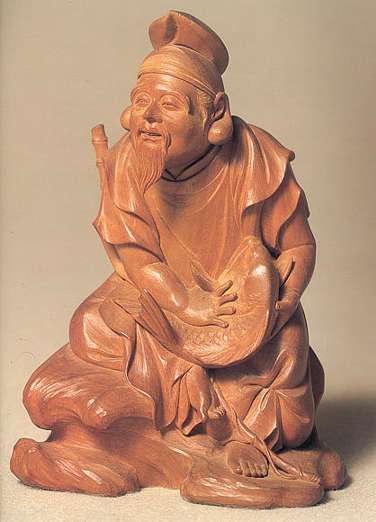
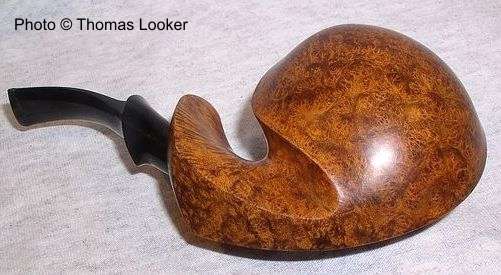
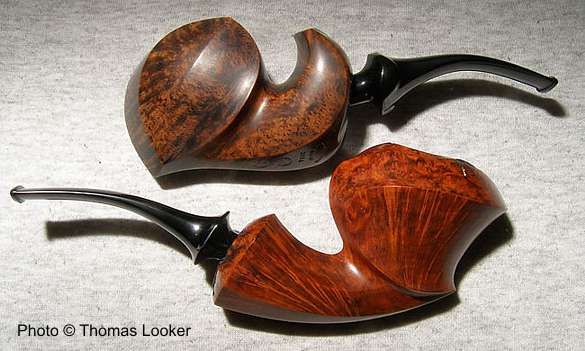
|
The trailing draperies below show a liveliness and grace that much impressed the young Tokutomi, as did the organic fullness of the forms beneath the other folds of clothing. The energy of Toku's "Wave" pipe expresses similarly energetic lines, it seems to me. As does the horn variation below it (very much an improvisation on one of Teddy's basic designs). The bottom pipe is Toku's first "Wave," carved after a conversation with Tom Eltang, while he was visiting Tom's workshop in Copenhagen. (Tom also came up with his version of the same idea.)Toku once mentioned to me that the "shield" on one of Yuki's 2007 pipes evolved out of a traditional element in Buddhist carvings. |
|
|
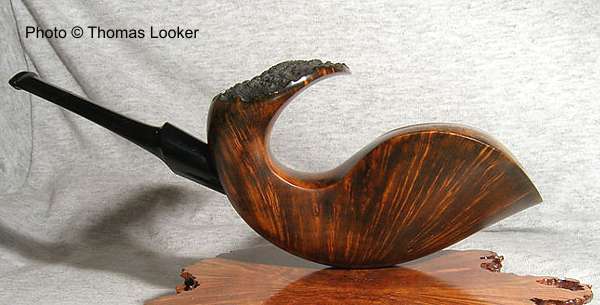
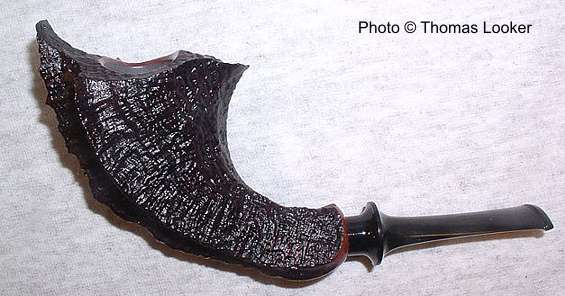
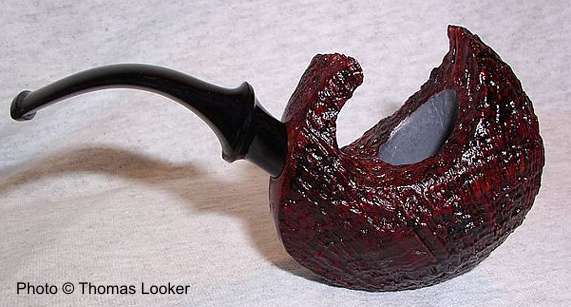
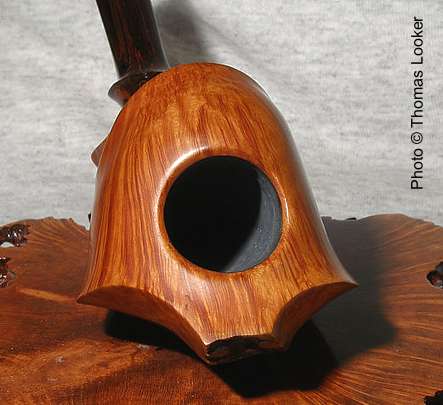
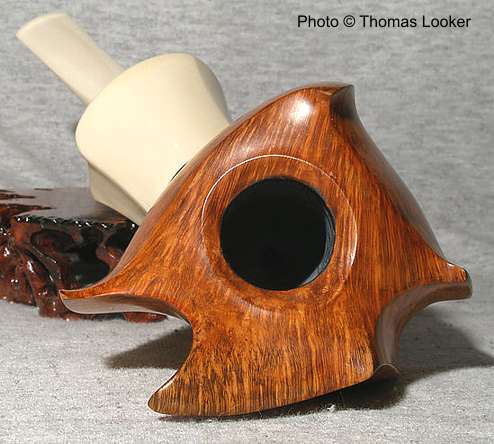
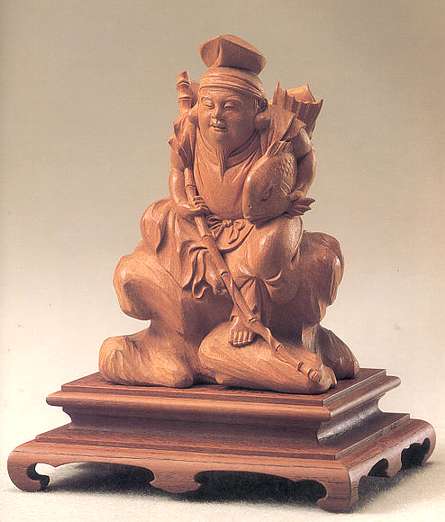
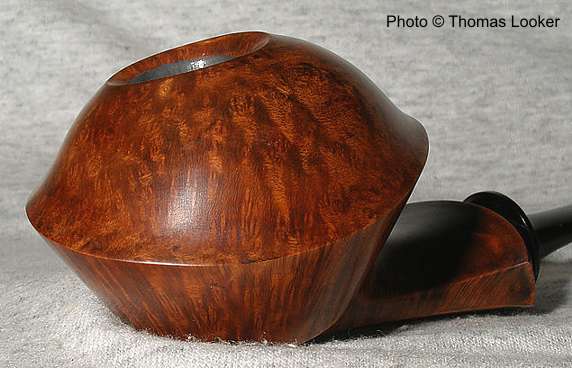
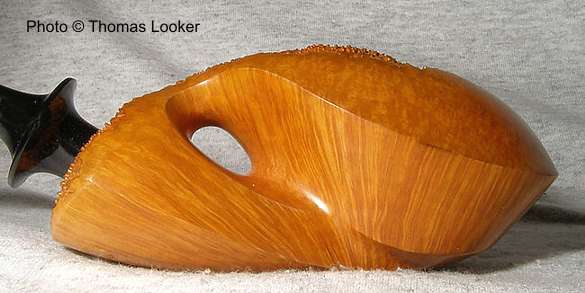
|
The previous mushrooms also come to my mind when I look at the next carving ... a sitting man whose figure is formed by a group of bulbous yet whimsical shapes that heave upwards with a patient, inexorable force. This composition (along with two or three others in this section) seems to embody a particular kind of earthy organicism in which an object remains closely associated with the ground out of which it has grown. Sculptures of this sort convey an elemental energy and express themselves in the language of roots and soil and stone. (See especially the relationship between the monkey and his natural "seat" [stone? wood? water?] on the next page. Also, in the previous carving of the fisherman, reflections of line and form pass between between legs, fishing pole, and stone, connecting the figure and his "base" in a way which strikes me as special and perhaps even uniquely Japanese even though I can't yet quite articulate why.)Toku once mentioned to me that the "shield" on one of Yuki's 2007 pipes evolved out of a traditional element in Buddhist carvings. NOTE: In the the photo below, the jolly monk seems to be wearing Toku's new "bridged mushroom" on his ear. |
|
|
|
![Proto-Blowfish-Sitter, SPC 140, [old] Snail Grade (2003)](tok_protoblowsit_r01.jpg)
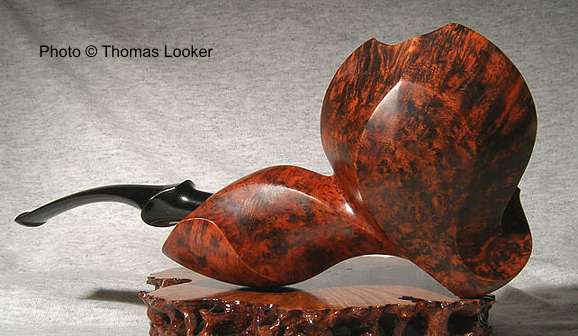
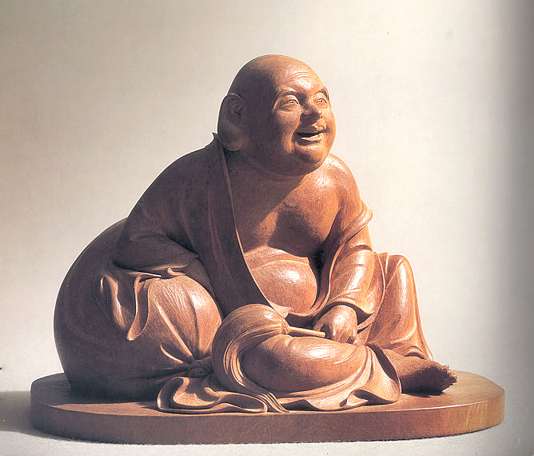
![L: "Flowering Blowfish," SPC 465, 3 snails (2006). R:Proto-Blowfish-Sitter, SPC 140, [old] Snail Grade (2003)](tok_2_bulbblows_side01.jpg)
...THIS SECTION CONCLUDES ON THE NEXT PAGE
NAVIGATION
END TOKUTOMI AND JAPANESE WOOD CARVING - 3